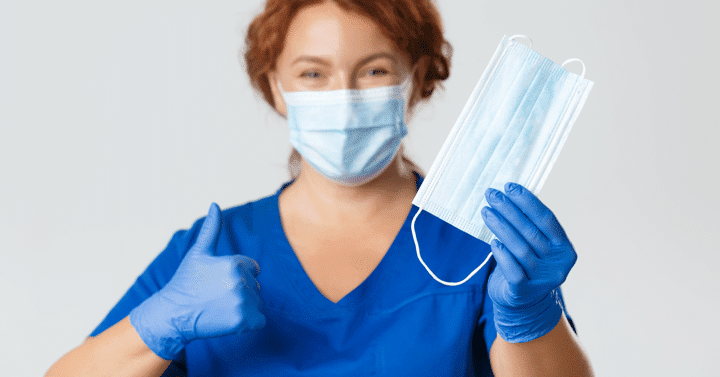Vaksman Dental Group
A multi-speciality practice committed to excellence, and never-ending improvement.
WHO WE ARE
Board-certified, experienced dentists, healthcare and administrative professionals.
WHAT WE DO
Offer a range of general and cosmetic dental services to address all of your dental health needs.
HOW WE’RE DIFFERENT
Modern equipment. Local, best-in-class labs. Same-day services. Amazing staff. Zero (0%) financing available.
I personally and carefully screen each South San Francisco Dentist and healthcare professional team member, all of whom have extensive experience, and are provided additional training to adhere to our clinical and other standards.
Whatever general or cosmetic dental service you require, our entire team will be dedicated to your care. We can’t wait to meet you!
Warmly,
Dr. Irena Vaksman, President
OUR VISION
A Completely Different Approach
Our appointments start on time, which means you’ll get more time with your provider and never feel rushed.
With same-day services and emergency appointments, you can rest assured that you’ll get the care you need, now.
Email your provider, book appointments online, and call us anytime. Our office generally responds within a few hours.

We accept
all PPO plans!
A healthy mouth benefits the whole body
Find the right dental insurance plans and programs.
COVID 19 – Our Plan
Health and Safety Controls
We have always considered our patients like family. Now more than ever, we promise to care for you as if you were our own parent, brother, sister or child. I kindly ask for your patience, as our dedicated staff works to best navigate these challenging times.


NO INSURANCE? JOIN THE VAKSMAN SMILE PLAN!
JOIN THE VAKSMAN SMILE PLAN!
- Exclusively for our uninsured patients.
- Make easy monthly payments for your preventive care.
- Save money on your treatment.
Our Services
Unique dental care experience in Vaksman Dental
Dental Exam
Dental Bridges
Sleep Apnea and Snoring Dentist
Sleep Apnea and Snoring Dentist Treatment Performed By an Expert Sleep Dentist
- Do you snore or has anyone told you that you snore?
- Do you wake up during the night?
- Do you have excessive daytime sleepiness?
- Have you ever had a sleep study?
- Do you have high blood pressure?
If so, you may be suffering from Sleep Apnea or snoring. You’re not alone. Sleep apnea and snoring affect millions of people worldwide. And they can have serious consequences for your health and well-being. The good news is that sleep dentists at Vaksman Dental Group can help!
At Vaksman Dental Group, we understand the impact that sleep apnea and snoring can have on your quality of life. That’s why our Sleep Apnea and snoring dentist will offer treatment options to help you breathe better and sleep soundly.
Full Mouth Reconstruction
Restoring Your Smile to Its Former Glory
Are you dealing with multiple dental problems? A full mouth reconstruction might be the solution you need to restore your smile and improve your dental health. Full mouth restoration involves a comprehensive dental treatment plan that combines various dental restoration services to address several dental issues at once, resulting in a fully functional and aesthetically pleasing smile. Among other things, this may include shifting your teeth with Invisalign, extracting diseased teeth, and adding dental implants, as well as crown, bridge or veneer restorations. At our restorative dentistry practice in South San Francisco, we offer full mouth restoration services to patients who need extensive dental work. Our experienced and skilled restoration dentist will work with you to create a personalized treatment plan that addresses your unique dental needs and concerns.Dental Mouth Guard
Professional Protection for Your Teeth
Mouth guards are dental appliances designed to protect your teeth and mouth from injury during physical activity, prevent teeth grinding or clenching while sleeping, and treat various dental conditions. A dental mouth guard is custom-made by a dentist to fit your mouth comfortably and provide maximum protection.Root Canal
Root Canal Specialist
If you are experiencing severe tooth pain, it is important to seek immediate dental care as it may be a sign of an underlying dental issue that requires prompt attention. One such issue that can cause significant pain is an infected or damaged tooth root, which may require a root canal procedure to treat. While the idea of such a procedure may cause some anxiety or fear, it is a common and highly effective treatment option for saving a damaged tooth and alleviating pain. The alternative option of treating the canals is to do nothing or extract the tooth, both of which will leave you toothless. Remember, you only have one set of adult teeth, which you need to eat, so you want to care for your teeth to the greatest extent possible.Cavities
Don't Let Cavities Ruin Your Smile: Prevention and Treatment Tips
Dental cavities, also known as tooth decay or dental caries, are probably the most common dental issues. Cavities occur when bacteria in the mouth produce acids that attack your tooth enamel. Over time, this acid erosion causes destruction and even holes in the teeth. Besides destroying the beauty of your smile, cavities unfortunately also lead to pain, sensitivity, and other oral health problems. If left untreated, cavities usually get worse and will eventually require a root canal. They can even potentially lead to tooth loss. Do you experience any pain or notice spots on your teeth that shouldn’t be there? It is important to see a dentist as soon as possible. A dentist will diagnose the problem by examining the teeth and sometimes using dental X-rays to confirm the diagnosis. Do not hesitate to contact a dentist for cavities before it gets too bad.Dental Crowns
Teeth Whitening
Dental Implants
Dental Veneers
Emergency Dentist
Invisalign
Dentures
Dental Cleaning
Regular dental cleanings are not just about maintaining a beautiful smile. They play a vital role in preserving your oral health and overall well-being. At Vaksman Dental Group, we are committed to delivering exceptional cleaning services that will leave you feeling refreshed, confident, and ready to showcase your radiant smile. Book your appointment today and let us rejuvenate your oral health!

